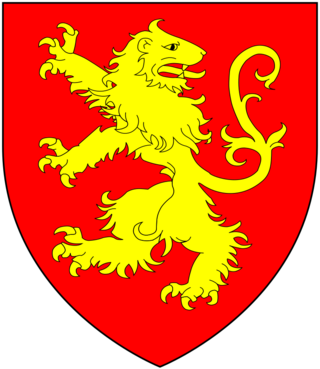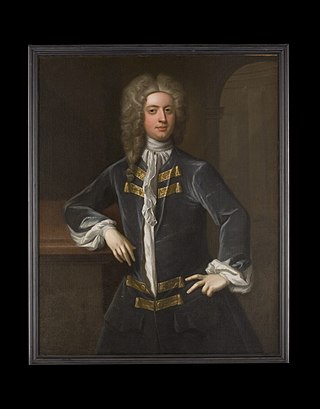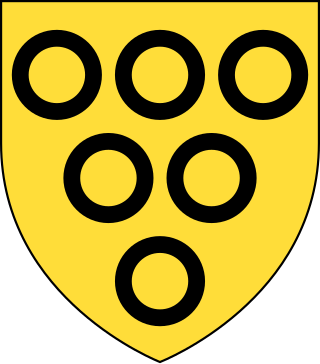Wilfrid Lawson may refer to:

The Morice Baronetcy, of Werrington in the County of Devon, was a title in the Baronetage of England.
Sir Wilfrid Lawson, 1st Baronet may refer to:

The Fleming, later le Fleming Baronetcy, of Rydal in the County of Westmorland, is a title in the Baronetage of England. It was created on 4 October 1705 for William Fleming, Member of Parliament for Westmorland. The second Baronet was Bishop of Carlisle. The third Baronet represented Cumberland in the British House of Commons. The fourth Baronet was Member of Parliament for Westmorland. He assumed the surname of le Fleming, an ancient version of the family surname. This version of the surname has also been borne by the Baronets from the seventh Baronet onwards. The sixth Baronet, an ordained priest, served as Rector of Windermere.
The sheriff is the oldest secular office under the Crown. Formerly the sheriff was the principal law enforcement officer in the county but over the centuries most of the responsibilities associated with the post have been transferred elsewhere or are now defunct so that its functions are now largely ceremonial. The sheriff changes every April.

Sir Wilfrid Lawson, 1st Baronet, of Isel Hall, Cumberland (c. 1610–1688) was an English landowner and politician who sat in the House of Commons from 1660 to 1679.
Sir Wilfrid Lawson, 2nd Baronet of Isel was an English politician.

Sir Wilfrid Lawson, 3rd Baronet of Isell FRS was a British politician who sat in the House of Commons from 1718 to 1737.
Sir Wilfrid Lawson, 8th Baronet was a British politician. He inherited the title on the death of Sir Alfred Lawson, 7th Baronet, in 1752. He was one of the Lawson Baronets of Isell, Cumberland.
Sir Gilfrid Lawson, 6th Baronet (1675–1749), of Brayton Hall, Cumbria, was an English lawyer and Tory politician who sat in the English House of Commons between 1701 and 1705 and in the British House of Commons from 1708 to 1734.
Sir Gilfrid Lawson, 9th Baronet, was one of the Lawson Baronets.

Wilfrid Lawson of Brayton Hall, Cumberland was an English politician who sat in the House of Commons in 1659 and 1660.
Sir Hilton Lawson, 4th Baronet (1895–1959) was the son of Mordaunt Lawson, third son of Sir Wilfrid Lawson, 2nd Baronet, of Brayton. He was educated at Repton School and later the Royal Military College. He served throughout World War I in the Royal Fusiliers where he attained the rank of Major. In 1939 he rejoined the army, went to France with the British Expeditionary Force, taken prisoner at Dunkirk and did not return until 1945. He succeeded his uncle Sir Wilfrid Lawson, 3rd Baronet, of Isell in 1937 and afterwards took up residence at Isel Hall.

Isel Hall is an ancient Cumbrian residence that sits on a steep rise on the northern banks of the River Derwent, two miles (3.2 km) south of Bassenthwaite Lake, three miles (4.8 km) east-north-east of Cockermouth, with views over the Lake District fells and Skiddaw. It was once the home of the Lawson family and is a Grade I listed building.
Sir Joseph Pennington, 2nd Baronet, of Muncaster, Cumberland, was a British landowner and Whig politician who sat in the House of Commons from 1734 to 1744.

The Mackenzie Baronetcy, of Tarbat in the County of Ross, was created in the Baronetage of Nova Scotia on 21 May 1628 for John Mackenzie. His son, the 2nd Baronet, was created Earl of Cromarty in 1703; he resigned the baronetcy in favour of his younger son Kenneth, who was created a baronet in the Baronetage of Nova Scotia on 29 April 1704, with remainder to his heirs male whatsoever and with the precedence of 1628. The 3rd Baronet was one of the Scottish representatives to the 1st Parliament of Great Britain and later represented Cromartyshire. The 4th Baronet was Member of Parliament for Cromartyshire. In 1744 he succeeded to the Mackenzie baronetcy of Roystoun on the death of his uncle Sir James Mackenzie, 1st Baronet, of Roystoun.

The Fletcher baronetcy of Hutton le Forest, Cumberland was created on 19 February 1641 for Henry Fletcher. He served two terms as High Sheriff of Cumberland 1641–1643, raised a regiment for the Royalist forces of the First English Civil War, and was killed at the Battle of Rowton Heath in 1645. The baronetcy was extinct on the death of the 3rd Baronet in 1712.

The Owen baronetcy, of Orielton in the County of Pembroke, was created in the Baronetage of England on 11 August 1641 for Hugh Owen, Member of Parliament for Pembroke, Haverfordwest and Pembrokeshire.

The Lowther baronetcy, of Whitehaven in the County of Cumberland, was created in the Baronetage of England on 11 June 1642 for Christopher Lowther; he was the younger brother of Sir John Lowther, 1st Baronet, of Lowther.









